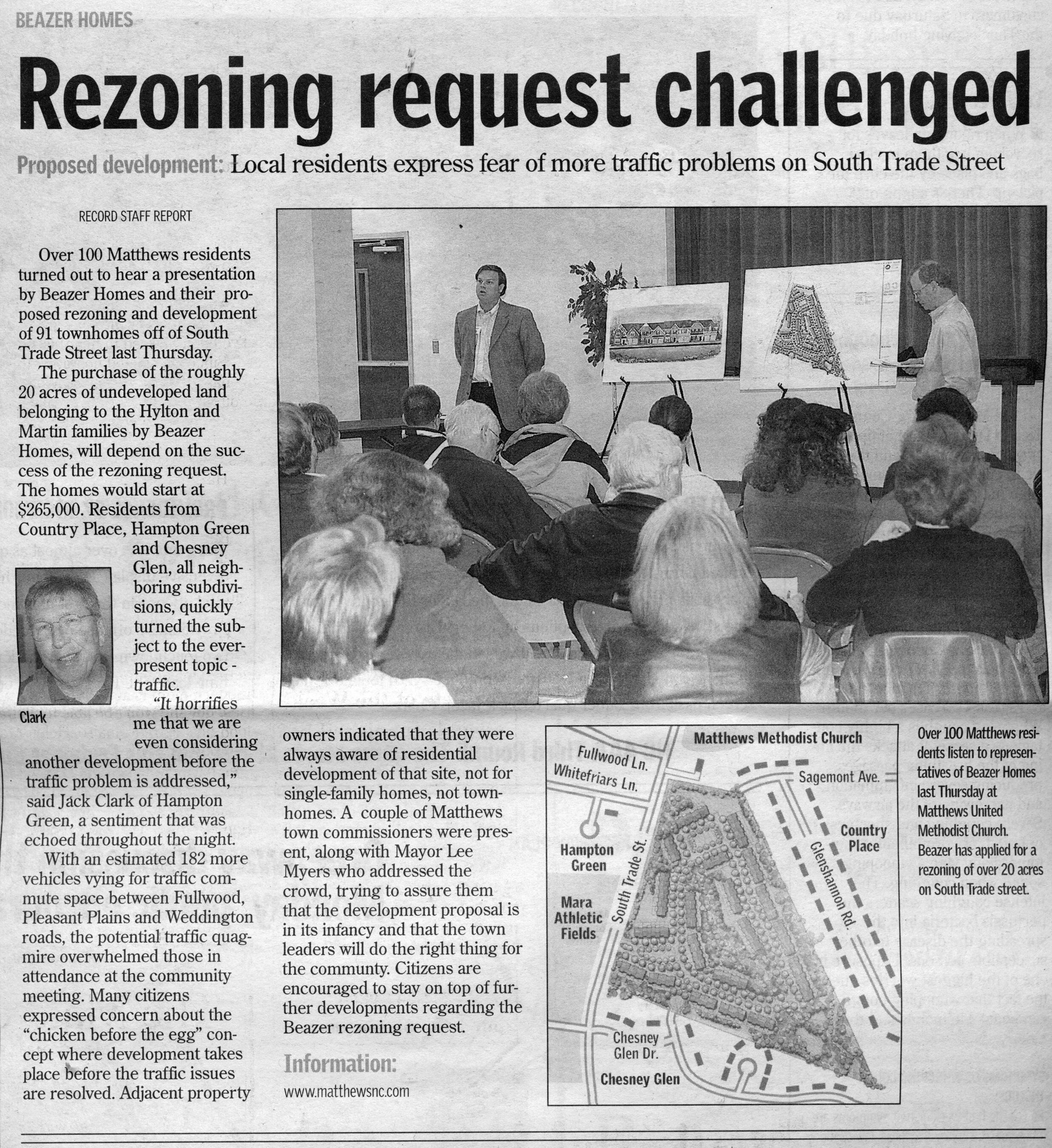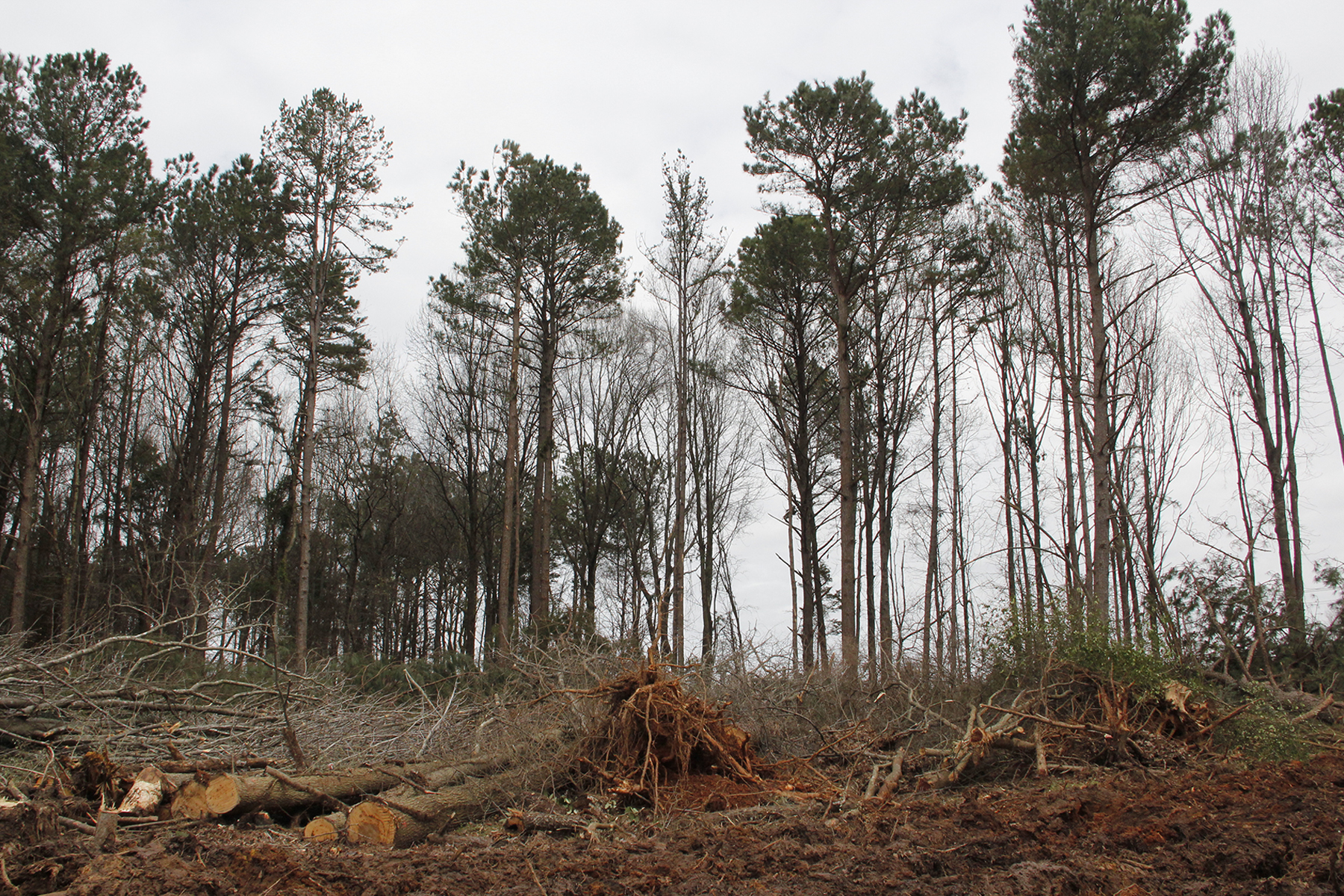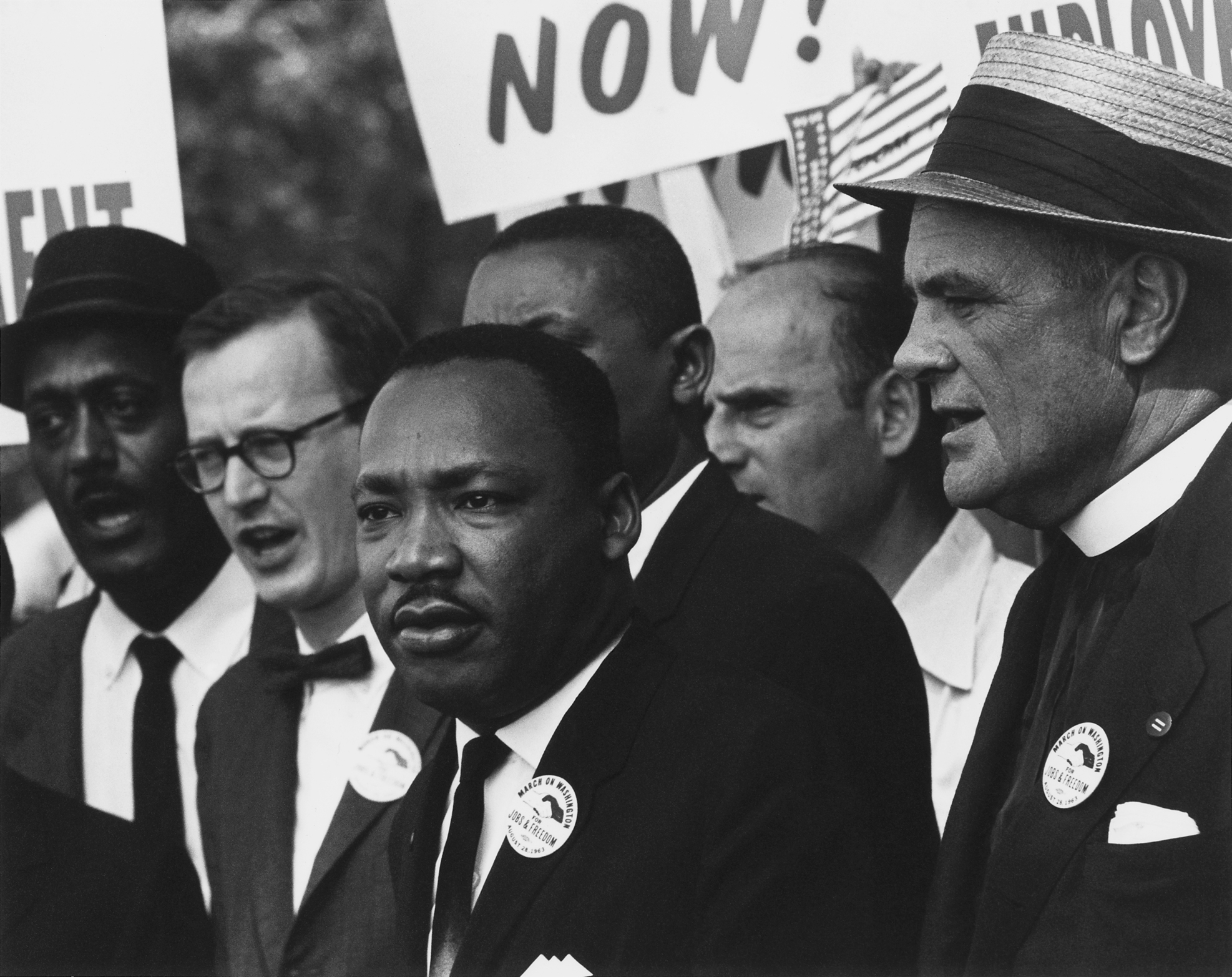The War at Home
“See that field over there?” 84-year-old Neubert Purser points to a garden half-full of greens and winter vegetables, a sliver the size it was in its heyday. “My wife and I pulled up tow-foot-tall Johnson grass by its roots and piled it in the driveway.”
His oldest child, Michael, smiles, probably having heard the story before. “We ran over it with a tractor and then we burned it. It still grew back.” Working and saving for over nine years, he and his wife, Juanita, settled on 70 acres of land on Matthews-Mint Hill Road near Phillips where they raised three children - all grown and living in the area with children of their own. Neubert and Juanita, now deceased, along with their children, grew and preserved their own food; raised crops, chickens, hogs, and cattle. People around town still talk about the incredible piece of property.
Hot Property
For the last thirty years, developers of every ilk have been eyeing Purser’s property. But he never put it up for sale.
“It got to be a joke in our family,” daughter Janet Harrell of Matthews chuckles. “Daddy would say, ‘It’ll cost $100,000 to look around.” The Charlotte News wrote a big story in the early eighties about Purser’s refusal to sell his land. But farming is in his blood and it’s all he ever planned to do.
Those weeds were tough and stubborn. But Purser is tougher. Some would say more stubborn, too.
While discussing the Town of Matthews’ recent condemnation of his property for future park and public use projects, there is a sense about the old farmer that goes beyond sadness. Defeat, maybe? That seems unlikely because anybody who’s spent time with Neubert Purser knows he isn’t a guy who will lay down without a fight.
He paid a big price for that dug-in nature.
The beginning of the end
Wounded at the age of 22 during the Battle of the Bulge in World War II, the young man from Union County swore to himself that if he ever made it out of there alive, he was going to buy himself a little farm when he got back to the states. A dream, perhaps. But one that probably helped keep him alive.
Cold?
“You don’t know cold,’ he grimaces. “I seen frozen bodies stacked up like cords of wood in piles all over the place. All kinds of bodies.” He can’t stand going into funeral homes to this day.
In 1945, while preparing to cross the Roer River in Germany, Purser and other members of the 102 Infantry division took a beating.
“The Germans opened up with everything they had that night,’ he recalls. “I was hit when an 88mm shell exploded near the boat.” A chunk of meat was ripped from his right thigh. The men dug in for 12 hours that night waiting for the barrage to subside. “The sky was lit up so bright, you coulda read the newspaper.”
The wounded were thrown on, what Purser describes as, a cattle car and taken to the hospital. “If you hollered or cussed, you got a shot of morphine.”
Reflecting back, the old man says, “I always thought that if I had made it a couple more days after that fight, I might’ve gotten out of that war in one piece.”
He would’ve been right. After the crossing of the Roer, then the Rhine River, the German army was in full retreat and would never fully recover.
It was the beginning of the end.
Plans for growth and the greater good
“This is the absolute worst part of a job like this,” Matthews Town Manager Hazen Blodgett confessed.
Condemnation is undoubtedly one of the most difficult things the Town of Matthews has undertaken. The $5.0 million in park bonds that passed in 2004 was originally intended to purchase land and simply “land-bank” it. Vacant land in the Matthews community is vanishing fast. “We have about 43 acres of town parkland for 25,000 residents,” explained Blodgett. That’s way below national standards for open space. In a community growing as fast as Matthews - it’s an all-out war against encroachment. If the land is not set aside for public open space for future generations it will be lost to development. There are only a few large tracts left in Matthews like the Purser property.
The Town and the family have mediated an agreement that set the amount paid to the Pursers at $59,000 per acre. The old farmer will die on that soil. It will belong to the Town of Matthews but he has the right to stay there until the bitter end. Had the battle gone to court, a jury would have set the value of the land.
Twenty years from now, when Neubert Purser’s deeply loved land is helping to stem back the tide of relentless development, the sacrifice will seem worth it. The battle is a valiant one.
As families toss balls, fly kites, walk dogs, and send their children to Matthews’ newest public school near the corner of Phillips and Matthews-Mint Hill roads, Purser’s pain might not be in vain. “I’ve only seen my daddy cry three times in my life,’ says youngest daughter Lynn. ‘One, when our mother died; two, when his daddy died; and three, over this farm.”
Only time will tell if this soldier’s battle helped win the war.


































